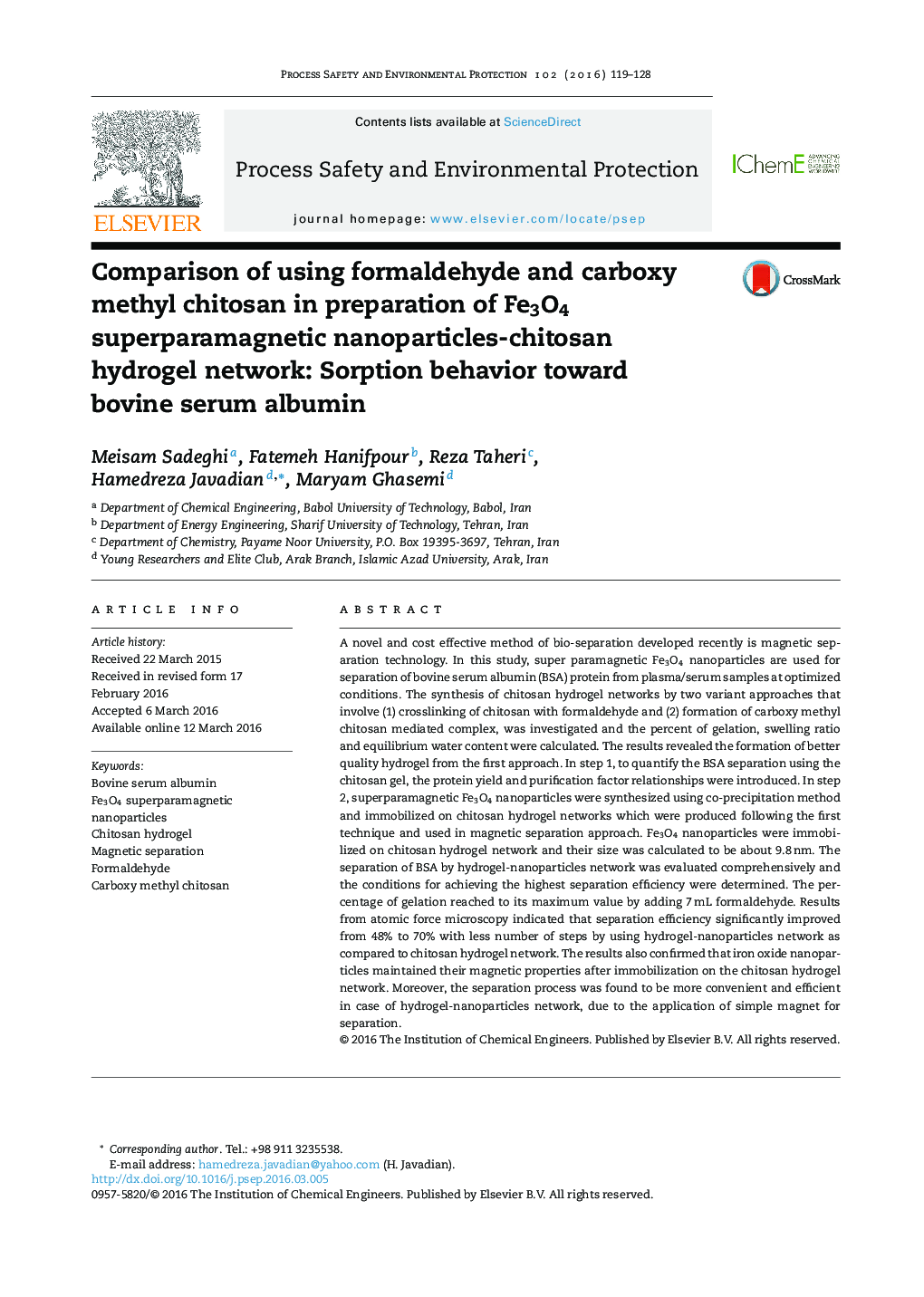| کد مقاله | کد نشریه | سال انتشار | مقاله انگلیسی | نسخه تمام متن |
|---|---|---|---|---|
| 588067 | 1453336 | 2016 | 10 صفحه PDF | دانلود رایگان |
• The Fe3O4 magnetic nanoparticles were immobilized on chitosan hydrogel networks.
• Magnetically field was used for separation of BSA.
• The separation of BSA was more efficient by hydrogel nanoparticles network.
• The separation process by hydrogel nanoparticles network was evaluated to be 70%.
A novel and cost effective method of bio-separation developed recently is magnetic separation technology. In this study, super paramagnetic Fe3O4 nanoparticles are used for separation of bovine serum albumin (BSA) protein from plasma/serum samples at optimized conditions. The synthesis of chitosan hydrogel networks by two variant approaches that involve (1) crosslinking of chitosan with formaldehyde and (2) formation of carboxy methyl chitosan mediated complex, was investigated and the percent of gelation, swelling ratio and equilibrium water content were calculated. The results revealed the formation of better quality hydrogel from the first approach. In step 1, to quantify the BSA separation using the chitosan gel, the protein yield and purification factor relationships were introduced. In step 2, superparamagnetic Fe3O4 nanoparticles were synthesized using co-precipitation method and immobilized on chitosan hydrogel networks which were produced following the first technique and used in magnetic separation approach. Fe3O4 nanoparticles were immobilized on chitosan hydrogel network and their size was calculated to be about 9.8 nm. The separation of BSA by hydrogel-nanoparticles network was evaluated comprehensively and the conditions for achieving the highest separation efficiency were determined. The percentage of gelation reached to its maximum value by adding 7 mL formaldehyde. Results from atomic force microscopy indicated that separation efficiency significantly improved from 48% to 70% with less number of steps by using hydrogel-nanoparticles network as compared to chitosan hydrogel network. The results also confirmed that iron oxide nanoparticles maintained their magnetic properties after immobilization on the chitosan hydrogel network. Moreover, the separation process was found to be more convenient and efficient in case of hydrogel-nanoparticles network, due to the application of simple magnet for separation.
Journal: Process Safety and Environmental Protection - Volume 102, July 2016, Pages 119–128
